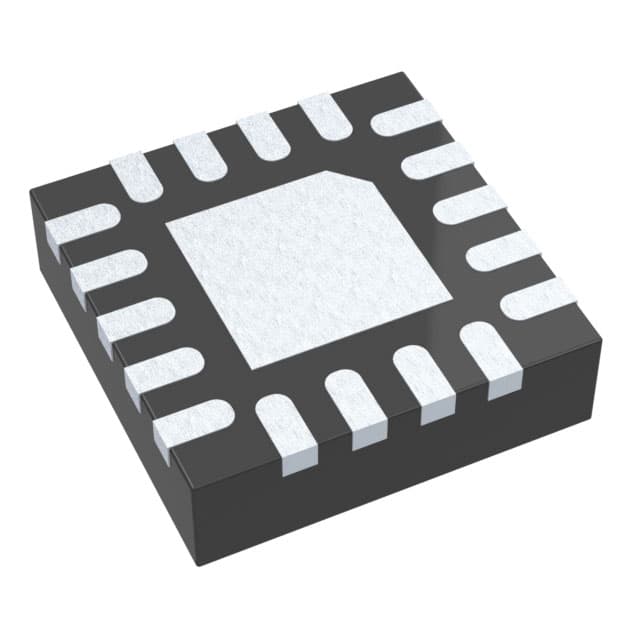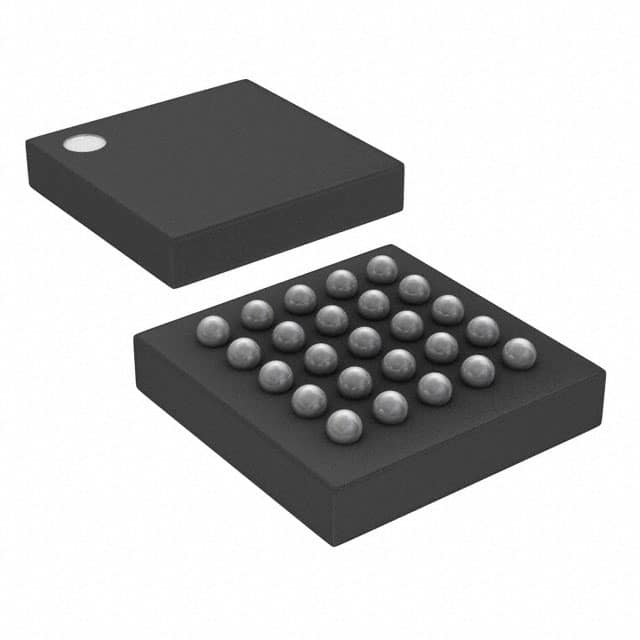Ⅰ. PMIC - Laser Drivers
Ⅱ. Physical Characteristics of PMIC - Laser Drivers
Ⅲ. Electrical Characteristics of PMIC - Laser Drivers
PMIC (Power Management Integrated Circuit) laser drivers are specialized components designed to provide power and control signals to drive laser diodes in various applications. Laser drivers are critical for controlling the intensity, modulation, and overall performance of laser diodes. Here's an introduction to PMIC laser drivers:

Laser Diode Basics:
Laser diodes are semiconductor devices that emit coherent light when current is passed through them. They are widely used in applications such as telecommunications, optical data storage, laser printing, medical equipment, and scientific research. However, laser diodes require precise control of current and voltage to ensure their optimal performance and longevity.
Function of PMIC Laser Drivers:
PMIC laser drivers are specifically designed to meet the power and control requirements of laser diodes. They provide the necessary electrical characteristics to drive laser diodes efficiently and accurately. The main functions of PMIC laser drivers include:
1.Current Regulation: Laser drivers control the current flowing through the laser diode. Precise current regulation is crucial as it directly affects the intensity and stability of the laser output. Laser drivers typically provide constant current sources or support various modulation techniques to adjust the current based on the desired operation.
2.Voltage Control: PMIC laser drivers ensure that the laser diode operates within its specified voltage range. They regulate the voltage to maintain stable and reliable laser diode performance.
3.Modulation Capability: Laser drivers offer modulation options to control the output of the laser diode. They can support various modulation techniques such as continuous wave (CW) modulation, analog modulation, or digital modulation (e.g., pulse-width modulation). Modulation allows for controlling the laser's output power, frequency, or phase, enabling a wide range of applications.
4.Protection Mechanisms: PMIC laser drivers incorporate protection features to safeguard the laser diode and the driver itself. These include overcurrent protection, overvoltage protection, thermal shutdown, and fault detection. These protections help prevent damage to the laser diode and ensure safe operation in various conditions.
5.Communication Interfaces: Some PMIC laser drivers may include communication interfaces such as I2C or SPI to enable configuration, control, and monitoring of the laser driver's parameters. These interfaces facilitate easy integration with control systems and allow for real-time adjustments and feedback.
Integration into PMICs:
Integration of laser drivers into PMICs offers several advantages. It allows for compact and efficient system designs by reducing component count and board space. Integration with other power management functions in the PMIC provides better coordination and optimization of power delivery to the laser diode. Additionally, PMIC laser drivers may incorporate features like ESD protection and advanced diagnostic capabilities to enhance system reliability and ease of use.

Physical Characteristics of PMIC - Laser Drivers
The physical characteristics of PMICs with laser drivers can vary depending on the specific design, package type, and intended application. Here are some common physical characteristics of these components:
1.Package Types: PMICs with laser drivers are available in various package types, such as integrated circuit (IC) packages. Common IC package types include Quad Flat No-Lead (QFN), Ball Grid Array (BGA), Thin Small Outline Package (TSOP), and Small Outline Integrated Circuit (SOIC). The package type is determined by the manufacturer and can impact the size, pin count, and mounting method of the PMIC.
2.Size: The size of PMICs with laser drivers can vary depending on the complexity and number of integrated components. Advances in semiconductor technology have allowed for the miniaturization of PMICs, enabling smaller form factors and more compact designs.
3.Pin Count: The number of pins on a PMIC depends on the specific design and functionality of the device. PMICs with laser drivers can have a varying number of pins to accommodate power inputs, laser diode connections, control signals, and communication interfaces.
4.Mounting: PMICs with laser drivers are typically surface-mounted on the printed circuit board (PCB) of the electronic system using soldering techniques. The specific mounting method may vary depending on the package type, such as through-hole mounting or surface-mount technology (SMT).
5.Heat Dissipation: PMICs with laser drivers may generate heat during operation, particularly when driving high-power laser diodes. Proper heat dissipation is crucial to ensure optimal performance and prevent overheating. PMICs may incorporate features such as exposed thermal pads, heat sinks, or thermal vias to enhance heat dissipation.
6.Electrical Interfaces: PMICs with laser drivers have electrical interfaces to connect with power sources, laser diodes, control signals, and communication interfaces. These interfaces include power supply inputs, laser diode output pins, control input pins, and communication interfaces like UART, I2C, or SPI for control and configuration.
Electrical Characteristics of PMIC - Laser Drivers
The electrical characteristics of PMICs with laser drivers are crucial for understanding their performance and compatibility with laser diodes and other components in the system. Here are some common electrical characteristics of PMIC laser drivers:
1.Supply Voltage Range: PMIC laser drivers have a specified range of input voltage within which they can operate effectively. It is important to ensure that the supply voltage provided to the PMIC falls within this range for proper operation.
2.Laser Diode Current Control:
(1.)Output Current Range: PMIC laser drivers provide a range of current outputs to drive the laser diode. This range is typically specified in terms of minimum and maximum values to accommodate different laser diode requirements.
(2.)Current Accuracy: Laser drivers offer a specified level of accuracy in maintaining the desired current output. Higher accuracy ensures precise control over the laser diode's output power and intensity.
3.Laser Diode Voltage: Compliance Voltage: PMIC laser drivers provide the necessary voltage to drive the laser diode. The compliance voltage is the maximum voltage that the laser driver can output to ensure that it can handle the voltage requirements of the connected laser diode.
4.Modulation Control:
(1.)Modulation Bandwidth: Laser drivers may have a specified modulation bandwidth that determines the maximum frequency at which they can accurately modulate the laser diode's output. Higher modulation bandwidth allows for faster modulation speeds and more precise control.
(2.)Modulation Depth: PMIC laser drivers specify the maximum modulation depth they can achieve, which indicates the extent to which the laser diode's output can be modulated. Modulation depth is often expressed as a percentage.
5.Communication Interfaces:
(1.)Control Inputs: PMIC laser drivers accept control signals to adjust the laser diode's operation, such as current modulation, intensity control, or on/off switching. The electrical characteristics of these control inputs, including voltage levels, logic levels, and timing requirements, should match the specifications of the laser driver.
(2.)Communication Interfaces: Some PMIC laser drivers feature communication interfaces such as UART, I2C, or SPI for configuration, control, and monitoring purposes. The electrical characteristics of these interfaces, including voltage levels and communication protocols, need to be considered for proper integration and communication with external devices.
6.Protection Features:
(1.)Overcurrent Protection: PMIC laser drivers may incorporate overcurrent protection mechanisms to prevent excessive current flowing through the laser diode, protecting it from damage.
(2.)Overvoltage Protection: Laser drivers may have overvoltage protection to safeguard the laser diode from voltage spikes or transients that could harm its performance or longevity.
(3.)Thermal Protection: Some PMIC laser drivers include thermal protection mechanisms to monitor the temperature and prevent overheating of the laser diode and the driver itself.



